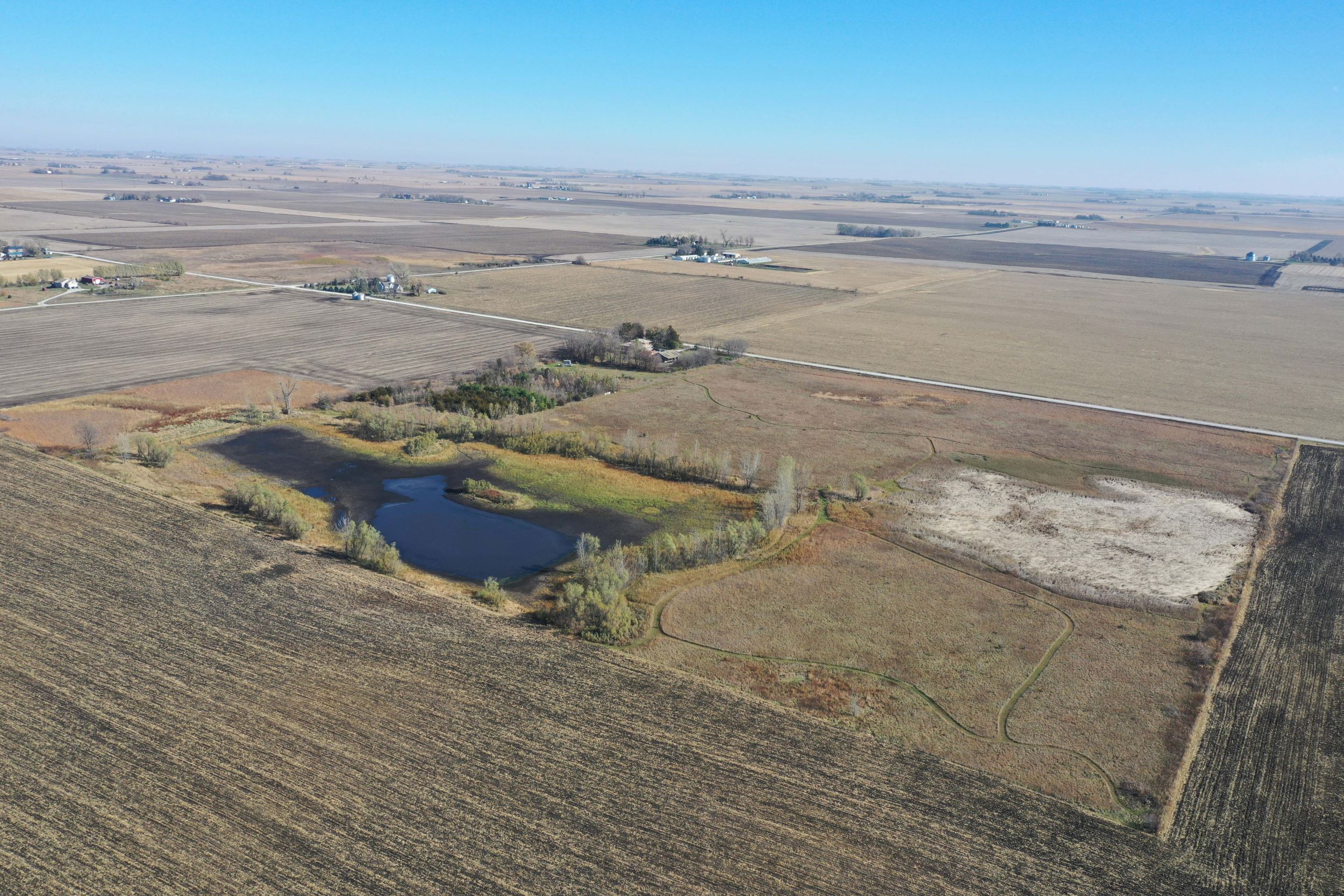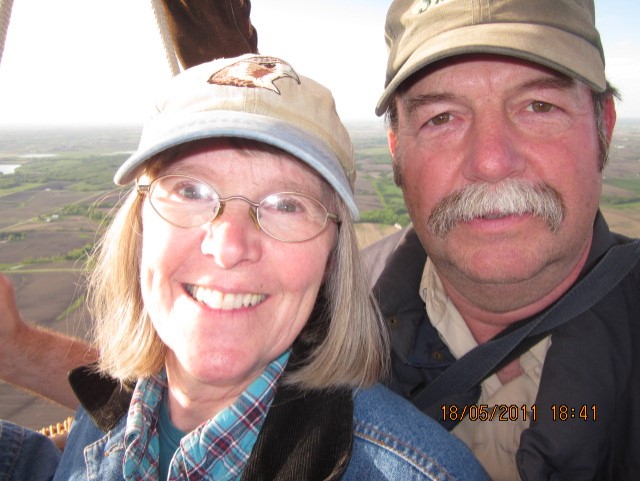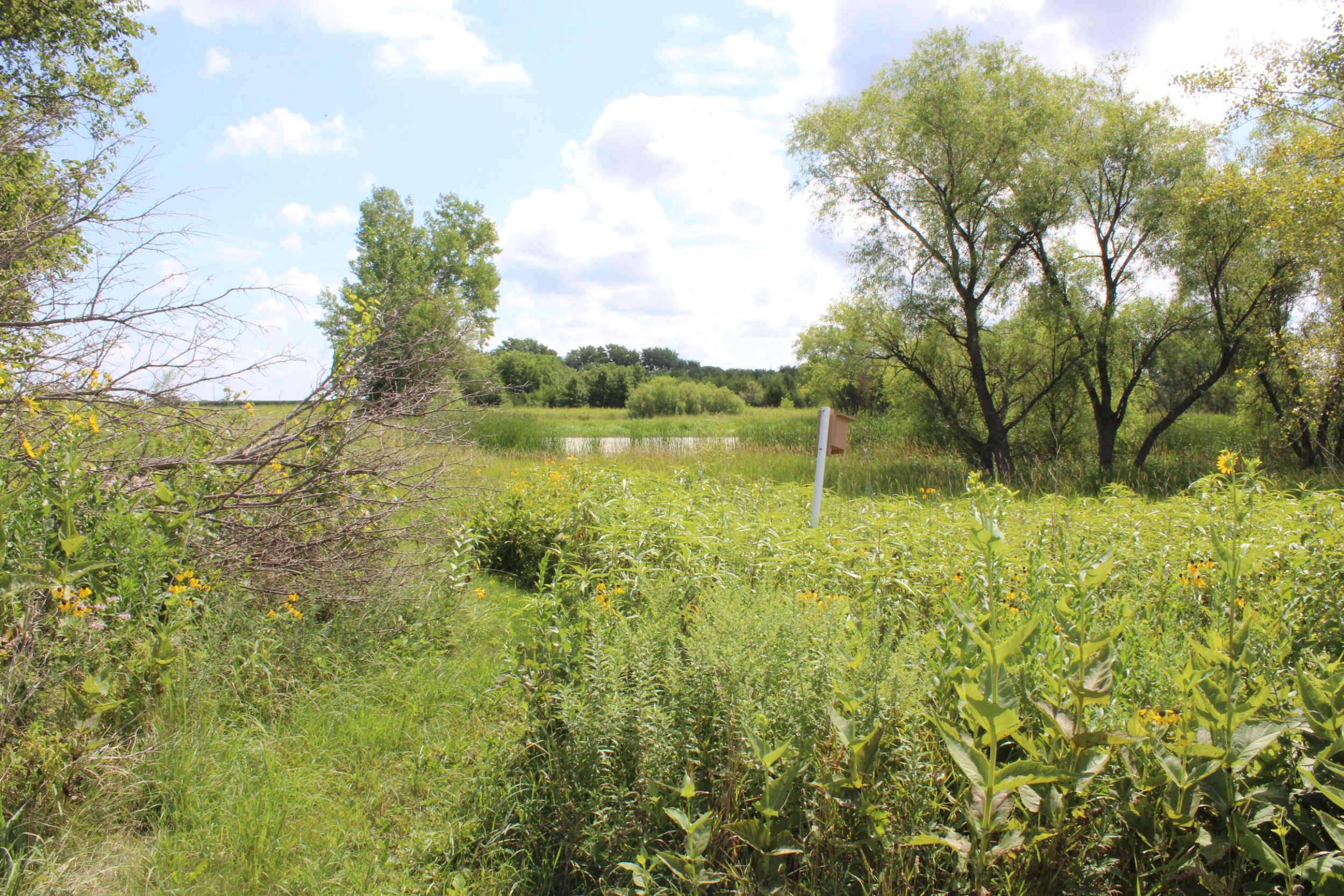Sowing Something Meaningful
By Katy Heggen on February 9, 2021 in Blog
.jpg)
A short drive from Ames, Mike and Linda Meetz's reconstructed and remnant prairie and wetlands are a sight to behold.
Pale purple coneflowers, black-eyed Susans and prairie blazing stars compel you to look their way as you wade through the tallgrass. Circling hawks shift your line of sight to the sky, while the calls of frogs from the marsh bring your gaze back to the ground.
But what can’t be seen here – all of the individuals that have invested themselves in this place, and the countless others that have received something from it – is even more impressive.
Taking Root
Mike and Linda were married in 1979 and moved into an old farmhouse rental on the southwest side of Ames that same year. They spent their weekdays in Ames; both were employed at the ISU Veterinary College. On the weekends, they’d drive out into the country in search of a place of their own, “a few acres with space for a garden.”
It was on one such drive that the couple saw a sign advertising a few acres for sale a couple miles north of the Union Pacific tracks southwest of the former Milford Township School.
“We called immediately. The guy who put the sign out said ‘I haven’t even listed it yet!’” Mike recalled.
After securing a starter loan, the couple purchased the land, made the move out to the country, and never looked back.

Over the years, they came to know the land, its character and subtle charms well. Mike, an ardent conservationist, also developed an affinity for the surrounding 40 acres, which included pockets of remnant prairie and wetland. When the land was offered for sale nearly 20 years later, they leapt at the opportunity.
“It was a big deal when we were able to acquire it, so we bit the bullet and went for it,” Mike said. “We were living on a shoestring to keep the payments up.”
After acquiring the land, the Meetzs began the process of planting it to prairie. Roundup Ready soybeans planted that first year helped suppress annual weeds and woody invasives. Native prairie seed was hand harvested from nearby prairie remnants. Other local ecotype prairie seed came from friends and fellow prairie enthusiasts in the area including Carl and Linda Kurtz, Cindy Hildebrand and Roger Maddux, and George and Trish Patrick.
The first seeds were sown in the winter of ‘98. Subsequent years were spent mowing, adding seed, applying prescribed fire and waiting as the prairie took root, a process that takes several years. Twenty-two years later, the prairie is a model reconstruction and a representation of the tight-knit community that played a part in its planting.
“I had more than one person say 36 acres is a lot to plant in one shot, but I had a lot of assistance and good advice from those folks,” Mike said. “They were really instrumental in helping me.”
Over the years, Mike has restored the remnant wetland and reconstructed another, providing additional wildlife habitat and water quality benefits. Hand collected acorn and walnuts along with a stand of 100 bare root bur oak and white pine seedlings were planted around the homestead that first year, a nod to his own northeastern Wisconsin roots. As the landscape has continued to evolve, so too has the part it has played in shaping the lives of others.
Sowing Seeds
Sharing this land and using it to introduce and instill a love of nature in others — especially youth — is as important to Mike as the land itself.

Mike’s spent many summer afternoons walking through the prairie with the children of friends and neighbors, pointing out different plants, catching frogs, answering questions and encouraging exploration.
“Some will look at it and see a scrambled up mess. Others will see connection,” Mike said. “The more times they come out here, they start to see the interconnectedness around them and begin to realize we’re not that far removed from that web.”
The land has long-been a research site for Iowa State University graduate students studying a wide range of topics related to Iowa’s land, water and wildlife. Years ago, Mike established an education agreement with Story County Conservation that allows staff to use the site for youth programming.
“The earlier we can get little minds out there, the better,” Mike said.

Countless friends, neighbors and acquaintances have come to enjoy the prairie over the years. Mike’s taken special care to cut trails and provide benches at scenic spots in the interest of creating ways for people of all abilities to experience the prairie.
Regardless of when and how they experience it, Mike just wants this to be a place for people to learn about and engage with nature.
“There’s value in keeping your feet on the ground,” Mike said. “It’s also good to take your shoes off and walk around every once in awhile.”
“If you’re going to do that in the prairie, wait until after a rainy day,” he added, chuckling.
Perennial Plantings
Mike’s many contributions to conservation on his own land, other projects and organizations in Story County, as well as his inexhaustible efforts to teach others about Iowa’s outdoors, have earned him many recognitions, including the Olav Smedal Conservation Award, the Story County Citizen of the year in 2016, the Iowa Association of Naturalists/Iowa Conservation Education Coalition’s Outstanding Volunteer Award in 2015, and INHF’s Lawrence and Eula Hagie Heritage Award in 2002. These honors speak to his conservation legacy, as does his decision to permanently protect his land with a conservation easement, which he donated to INHF this past December.
“From the partnership with Story County Conservation to contributing seed to other prairie restoration projects, this property keeps giving in ways that go way beyond its 38 acres,” said INHF Conservation Easement Director Erin Van Waus. “It’s been a privilege to work with Mike to protect it in perpetuity.”
